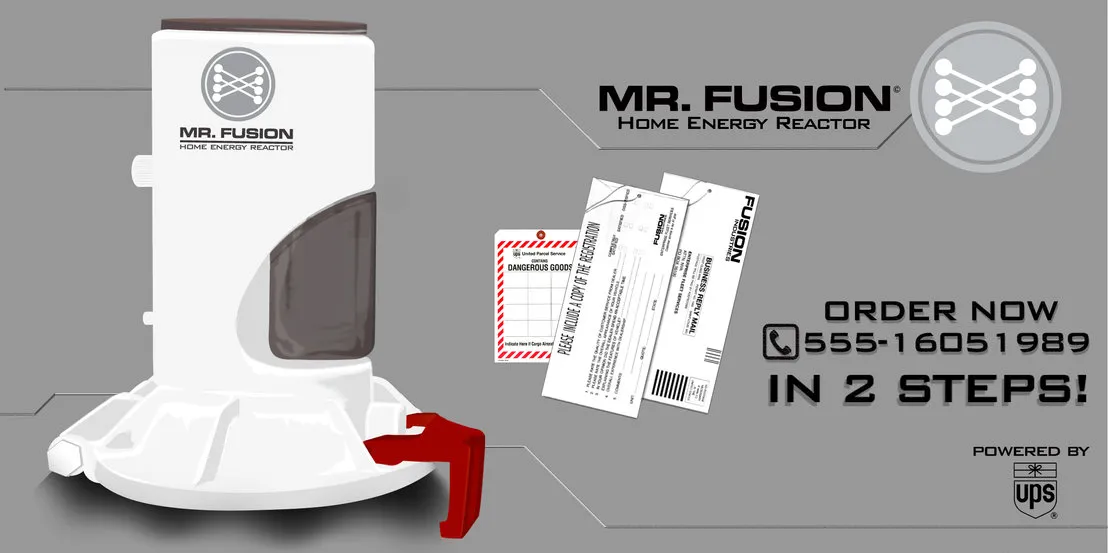A lot of the jokes in the Back to the Future movies are still funny, but these days most often in retrospect. The conceit of flying cars and weather control in 2015 tickles modern audiences because of their sheer anachronism. But perhaps the device most dated in Back to the Future is “Mr Fusion”. Much as 1955-Doc Brown made 1985 audiences laugh when he said, “I’m sure in 1985, plutonium is available at every corner drugstore”, 2020 audiences chuckle at the idea that fusion generators would be common household appliances by now.
But, that’s always been the way with nuclear fusion: it’s always just around the corner, just 20 years away. Fusion gives the climate-death of the planet a good run for its money as the most-continuously-wrong prediction. Still, scientists live in hope. MIT researchers recently published a series of papers claiming to demonstrate the viability of a compact fusion reactor.
But the most promising practical leaps and bounds being made are in the field of nuclear fission: in particular, Small Modular Reactors (SMRs).
[SMRs are] a type of next-generation nuclear fission technology, are also being developed, largely through private sector leadership. Though not as revolutionary as fusion technology, these smaller nuclear plants promise to be cheaper, faster to build, and safer than their older counterparts. Importantly, the fission technology is already fully established and commercially viable.
Just as in modern space technology, the most transformative work is being done by the private sector. Innovative rocket designs have slashed payload costs, which remained static for decades while space was a government operation. Unfortunately, government over-regulation is still stifling private innovation.
The major problems facing next-generation nuclear power, be it fusion or small modular reactors, are the licensing and regulatory requirements prescribed by the Nuclear Regulatory Commission (NRC). For decades, the only commercially viable nuclear plants have been large, light water-cooled reactors that have more or less remained stagnant in terms of design. The NRC has taken a prescriptive regulatory approach to these existing technologies. That means that the agency creates specific safety features and designs that each project must adhere to, rather than setting safety standards that allow companies to experiment with the most effective design, to submit for approval.
In fact, the burden of regulation imposed cost increases by up to 50% on nuclear reactors. The same governments who pour trillions into “renewables” which simply cannot, nor ever will, satisfy modern energy requirements, impose a stifling burden of “better-safe-than-sorry” over-regulation. But is such an approach really warranted?
One of the reasons why regulators have taken such a heavy-handed approach to nuclear power is the perceived danger of nuclear accidents. While the safety concern is overblown even for traditional designs—studies indicate that nuclear power is responsible for the fewest fatalities of any energy source—the NRC approach is downright absurd for next-generation nuclear reactors. Indeed, both fusion and SMR designs build in passive safety mechanisms that automatically shut down a plant in case of an accident. Applying an outdated, existing regulatory framework to a new generation of different, advanced reactor technologies is the surest way to stifle much-needed innovation and scale.
I’m reminded of regulators who forced early automobiles to be preceded by a person strolling along, waving a flag. After all, those newfangled automobiles might scare the horses!
It is vital that any licensing process designed by the NRC be performance-based and technology-inclusive, rather than prescriptive. Indeed, as the British scientist Matt Ridley and I have pointed out on this website before, innovation thrives off of experimentation, trial and error, and creativity. Allowing various reactor designs to compete for cost-effectiveness and safety will place upward pressure on innovation, and downward pressure on both time and cost.
Secondly, going back to the putative fusion reactors: should they ever eventuate, does it make sense to regulate fusion, a completely different technology, in the same way as fission?
Nuclear fusion and fission should be entirely separated in the regulatory process. Given fusion reactors’ inherent safety designs, it would be counter-productive to confine them to the regulatory paradigm of fission reactors. A specific framework must be devised that only applies to nuclear fusion reactors, and avoids entangling older generation regulations with newer, safer plant designs. This framework should take into account fusion’s dramatically lower risk profile.
Governments are notoriously useless at getting technology right. Big government enthusiasts invariably resort to, “But the internet…!”, ignoring the fact that the internet remained the arcane preserve of government departments and a handful of tech enthusiasts until private enterprise took it up. The same applies to computing generally. Microsoft and Apple took computers from the geeks to the masses.
A similar revolution awaits SMRs – when the heavy hand of government loosens its grip.
If you enjoyed this BFD article please consider sharing it with your friends.










